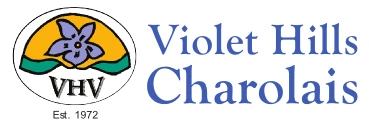How Things Have Changed
It is interesting to reflect on the changes in the beef cattle industry in temperate Australia, over the last 50 odd years.
Back in the 60's and 70's Herefords was the dominant breed. Store sales would be dominated with pen after pen of "baldy" steers and heifers. Other breeds were a rarity. When signature properties were advertised for sale the agents often used the statement "This property is known for producing sale topping Hereford cattle and Merino sheep". The only argument was whether the polls were better than horned.
The well documented problems that Herefords had at this time, namely bad feet, bad calving and eye cancer, were tolerated probably because of their superior performance, producing beef, in our grass fed systems. Hoof trimmers were in demand, especially with Hereford studs, many cancer eyes were removed by vets and low birth weight bulls such as Jersey's and Angus were used over heifers to try and lower calving problems. These were the days when Angus could be relied upon to produce smaller calves. I can remember one major Hereford breeder, in the New England, using Sahiwal bulls over his heifers to reduce calving problems.
Along came the Murray Grey breed, and after a brief period of popularity with the feedlots they seem to have declined in importance. This was probably a result of the limited gene pool rather than the quality of some of the cattle.
The 70's witnessed the "European invasion", with the introduction of many breeds from Europe. This was really facilitated by the improvement in artificial insemination techniques enabling farmers and a new breed of AI technicians to cross these new breeds with their existing cattle.
This was a time of some wonderful successes and horrible failures. This was also a time of entrepreneurs, sharp semen salesmen, unreal sales and an influx of "non cattle people". Fortunately there were some genuine cattle producers who modified some of the most promising new breeds to suit their environment and enhance their productivity and profitability. This takes time and in the meantime a new breed has to deal with the bad publicity caused by use of inappropriate bulls and "dodgy" breeders. The cattle crash of 1974 sorted a lot of these people out.
The 80's witnessed an influx of tall, rangy, hard doing bulls from North America. Frame score was all the range. Creative breeding in North America changed some breeds almost overnight. This almost ruined many breeds. Herefords, Simmentals and Charolais were severely impacted, while Angus went through a dramatic transformation. The type of Angus being promoted for the long fed Japanese market was tall and late maturing. One prominent Angus breeder commented that type of animal maybe ok for the feedlot but "what do I do with the females that are late maturing, have poorer fertility and milking ability?"
We also experienced the anti fat health craze which encouraged the use of leaner, later maturing breeds. Older cattle farmers would remember the market for "Korean heifers" which were half finished, later maturing heifers with little fat cover.
Herefords, and I think Simmentals, have recovered, or are recovering from this "frame score" fad. Charolais are going really well in Queensland where a type is being bred that complements the Bos Indicus infused herds. In the temperate areas of Australia the Charolais, and other breeds, are the victim of the marvellous Angus publicity machine. This is made worse when inappropriate Charolais that have been bred for use on Bos Indicus infused herds, are sometimes used in the South.
You have to take your hat off to the Angus Society. They have brainwashed producers, agents and the processing industry into believing that anything "black" is what should be bred. As a result we have black Limosins, black Simmentals, black Fresian cross all fitting into their black category (with a little creative paperwork in some cases). Of course Red Angus don’t count as they are NOT black. This is real Monty Python stuff and shows the power of slick advertising and promotion of a brand name.
Back to the real world of commerce. It is well documented that if an appropriate Charolais is crossed with another breed (say Angus) the resultant progeny will have a slaughter weight at least 25kg heavier than the pure bred ,at the same age. This is a very conservative estimate. Industry experience is that the weight difference will be greater and both carcases will grade the same.
Using the grid from a major southern processor (12/1/2023).
Charolais cross carcase 360 kg @ 7.10 = 2556.00
Angus carcase 335 kg @ 7.45 =2495.75
This is a very conservative estimate of $60.25 per head difference or $6025.00 better return on 100 steers. There are a few drinks in that and the heifers are just as saleable.
If you go to a grass fed grid (which is a premium rate) the rate is the same for all British and Euro cross animals, and the difference would be $192.50 per head, which equates to a difference of $19,250.00 over 100 steers in favour of the Charolais cross.
It is not "rocket science" to see the increased profits that can be had simply by using an appropriate Charolais bull. I emphasise APPROPRIATE, as the tall, late maturing Charolais should be avoided, especially for the grass fed market. The increased performance completely overshadows any premium paid for "going black".
The smart operators understand this and are laughing all the way to the bank.

